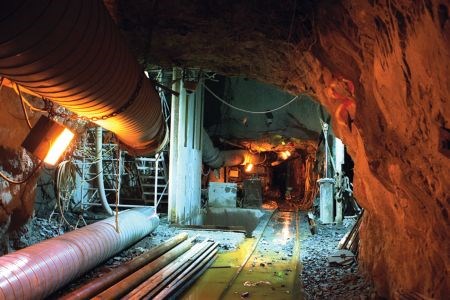Sewer projects are anything but sexy.
Lacking the glamour of a shiny new office building, the prestige of a tower of academia, or the expansive connectivity of a provincial highway, sewer upgrade projects tend to be overlooked for their more alluring engineered cousins, and Sudbury-based engineer Shawn Scott is the first to admit it.
But when it comes to functionality and necessity, sewer projects are at the top of the priority list.
“I think, as engineers, we always look at our projects as mundane: who's interested in a sewer project?” said Scott, vice-president and regional manager of the Sudbury office of R.V. Anderson Associates Limited. “But when you start to look at it and what's involved with it, and compare it on an international scale, they're actually very significant and substantial projects.”
R.V. Anderson got its due this year when it took home a trio of awards for a pair of projects completed in Sudbury.
In December, the firm — along with the City of Greater Sudbury, as the managing agency, and McNally Construction Inc., as the primary contractor — was recognized by the Ontario Public Works Association Project of the Year Awards for its sewage rock tunnel project in the city's south end, taking home an award for “structure, greater than $10 million.”
R.V. Anderson was additionally acknowledged for its work on the Levack and Onaping water supply project, earning the prize for “environment, greater than $10 million.”
The recognition qualified R.V. Anderson to enter its work at the international level, and in June brought home the hardware from the American Public Works Association, which named the rock tunnel project of the year in its environment ($25 to $75 million) category.
Scott, who served as project director for the rock tunnel venture, said it's the second time R.V. Anderson has been acknowledged for its work on an international level, but a first for its Sudbury office.
Established in 1948, the firm is headquartered in Toronto, offering civil engineering services throughout Ontario and eastern Canada. From Sudbury, it serves communities as far north as Thunder Bay, Pickle Lake, Cochrane, Timmins and Kapuskasing.
Completed in late 2009 at a cost of $31 million, the rock tunnel project required R.V. Anderson to extend sewer capacity into Sudbury's south end, which had limited growth capacity and where basement flooding had plagued residents for years. The firm planned, designed and oversaw the construction of a 6.5-kilometre sewer tunnel system extension that had to be blasted through 25 metres of bedrock.
When the initial tunnel was constructed in the 1960s, Sudbury's topography proved a challenge to the engineers, and the tunnel ended at Lily Creek.
“They were somewhat limited by the technology at the time, and they basically got into a situation where they weren't certain there was any more rock to extend the tunnel, so the tunnel just arbitrarily ended,” Scott explained.
Using modern technology, the firm confirmed the presence of enough rock under the creek to continue blasting, and opted to extend it into the south end. While new technology helped the firm design the extension, it was older, tried-and-true mechanics that got the job done.
“The tunnel was constructed with drill-and-blast technology, using jacklegs,” Scott said. “This technology has been used in mining for over 120 years, and was used to construct the tunnel. So it was a mix of new-age technology and old-school, proven techniques to construct it.”
The result is an extended sewer system that reduces constraints on the system, halts flooding and allows for future growth, Scott said.
As an added bonus, the elimination of six lift stations during the process is projected to save the city $17 million in operation and maintenance costs over the next 60 years.
Following on the heels of the rock tunnel system, the $18.5-million Levack/Onaping water system project, which was completed in 2010, addressed new regulations introduced by the provincial government as a result of the water contamination issue that occurred in Walkerton in 2000.
Upgrades were needed to the communities' individual systems, which were originally designed for the mining industry but no longer met provincial regulations for municipal water systems. An environmental assessment suggested combining the two was the ideal solution.
Using an innovative approach, R.V. Anderson divided the project into six smaller parcels, which required them to meet strict regulatory timelines. Included in the new infrastructure were a utility bridge across the Onaping River and a new watertower to serve the residential and mining communities in the area.
“The intent there was to meet the tight timelines that we had, so we had separated the project into multiple projects that were constructed at the same time,” Scott said. “The project was completed on time and on budget.”
As regional manager, Scott said it's satisfying to see the firm lauded for work that employs ingenuity in the face of challenge, especially on projects that don't always get their due.
“It's great to receive that recognition from our peers in the industry, and certainly for our client to receive recognition for embarking on such an innovative project,” he said.




